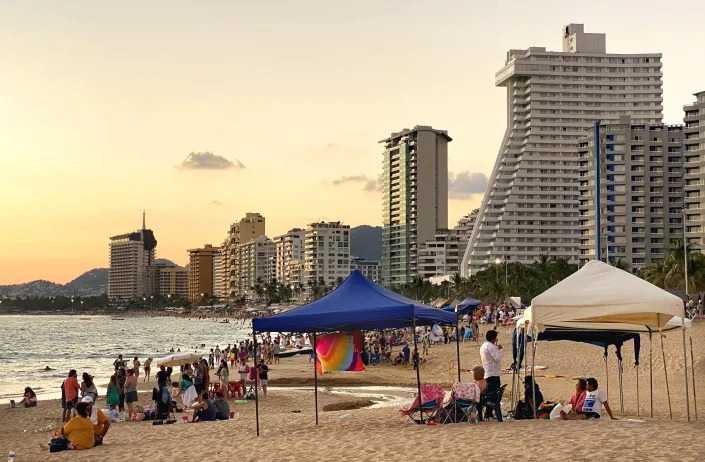If you’re eager for a sunny winter getaway in Mexico, but want to avoid the gringo glitz of Cabo and Cancun, consider touring the heart of old Mexico for two weeks in a rental car.
Be warned, driving in Mexico can be scarier than skiing on black diamond slopes.
Janell and I recently drove the loop from Mexico City to Acapulco, Huatulco, and Oaxaca. Along the way, we stayed in city apartments, historic adobe homes, and poolside beach condos for rates that ranged from a ridiculously low $21 to a modest $75 a night. Restaurant dinners for two never topped $20, even with drinks and tips.
Everything in Mexico is cheap! Except for rental cars.
Because of poor roads and chaotic drivers, cars cost $200 a day with full insurance. We got an old model, scratched Chevrolet sedan for $150 a day because we chose a policy with a $1,000 deductible, betting that we wouldn’t add new scrapes.

We faced Mexico City traffic first, and it was the worst. Cars park in traffic lanes, red lights are mere suggestions, streets merge at all angles, and motorcycles weave everywhere. When traffic stops, pedestrians roam between cars to sell candy, wash windshields, or juggle on unicycles for tips.
Our first Airbnb was a three-story apartment in the trendy Roma Norte neighborhood, within walking distance of the zocalo – the big plaza at the center of downtown. For the holidays the square is filled with circus rides, vendors, poinsettia displays, and about 50,000 people. The area to the right of the cathedral is reserved for Aztec reenactors, who dance wearing eagle wings, feathered headdresses, and skull masks.
For years people assumed Mexico City’s cathedral was built atop the ruins of the Aztecs’ main temple. In the 1970s archeologists discovered the Templo Mayor was actually under the block to the southeast.
After tearing down 19 buildings they found the stump of the time the Spaniards had attempted to destroy. Each of its seven layers had been built atop the previous one by emperors who wanted to build the temple bigger. The final pyramid stood 197 feet tall, the equivalent of a 20-story skyscraper. A museum preserves two 15-foot-diameter stone discs that were once on top.

Back in the zocalo, I bought a straw fedora from a street vendor for the posted price of 150 pesos ($7.50). The shopkeeper was speechless. When I asked, “Is that too much?” the vendor and her mother laughed themselves silly. Later I saw the same hat in a store for 30 pesos. Evidently, you only pay full price in stores.
On our second day in Mexico City, we drove 15 miles northeast to Teotihuacan, the huge temple complex that is the country’s top tourist attraction, with 4 million visitors a year. When the wandering Aztec tribe settled near here in the 1200s they found the city abandoned, but the temples were so impossibly gigantic the Aztecs declared this must be the birthplace of the gods.
All the best art from Aztec and Mayan sites has been preserved at the National Museum of Anthropology in a park just west of downtown – our destination for day number three. As at most museums in Mexico, admission here is just $4. You could spend a week on this one.
Next, we drove five hours on a bumpy $20 toll freeway to the Pacific Coast at Acapulco. Dropping into this city out of a desert mountain range is like landing in a different world. White skyscrapers line a nearly circular bay. At night the main street is a procession of fairy-tale carriages, strung with colored lights to resemble Mickey Mouse or Cinderella’s pumpkin. In Acapulco’s quaint past, these were donkey carts bedecked with flowers. Now they are trailers pulled by all-terrain vehicles.
A jet-set destination in the 1960s, Acapulco lost its luster when gangs made the town known for its homicide rate. The U.S. State Department now recommends avoiding Acapulco.
Click here to read the complete original article on The Register-Guard



